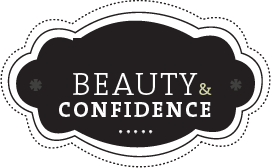Now that spring has arrived, many families are reaching for the tissue box. After all, 30 percent of adults and 40 percent of children battle some form of allergies, according to the American Academy of Asthma & Immunology.
If you or your little ones are plagued by allergies, see your physician to get those symptoms under control. And in addition to over-the-counter and prescription medications, there are a few additional moves that can help ease the sniffles, sneezes and watery eyes. Consider these following strategies:
1. Try a saline rinse and spray. Rinsing the nasal passages with a saline solution helps flush out irritating allergens and dried mucus, which eases congestion. I recommend using a rinse before administering any nasal spray medication: It cleans off nasal membranes, so the medication is better absorbed.
If you make your own saline solution, it's essential to use sterile water. A type of bacteria in drinking water, which is harmless when consumed, can lead to life-threatening infections when introduced to the sinuses. Although these cases are extremely rare, play it safe and boil water before using it (including both tap and bottled water).
2. Find a healthy way to stress less. Stress increases levels of a hormone called cortisol, which can trigger inflammation in the body and worsen allergy symptoms. To stay calm and collected, encourage your family to exercise: It may strengthen an area of the brain that buffers against stress, according to researchers from the National Institute of Mental Health. Turn exercise into quality time by going on family walks and bike rides, and encourage massages for further relaxation.
3. Scale back on sugar. Some foods simply aren't helpful for allergies, like sugar and simple carbohydrates (think white flour/bread/rice, along with many processed goods). Eating a diet that's high in these foods spikes blood sugar and encourages bodily inflammation. In fact, researchers from Loma Linda University have shown that sugar can suppress the immune system's response.
To keep allergy symptoms in check, steer clear of added sugars whenever possible, and trade refined grains for nutritious whole grains.
4. Consider the right vitamins and nutrients. Certain nutrients and vitamins may also help you and your children find relief, as part of your diet and sometimes as a supplement. I recommend the following, but -- as with any supplement -- consult your own physician first:
- Vitamin D This important vitamin has an anti-inflammatory effect on the body. According to a study published in The Journal of Allergy and Clinical Immunology, children with low levels of vitamin D were more likely to develop allergies than those who got enough of the nutrient. You can get vitamin D in salmon, along with most dairy products and cereals. Children may also take a supplement of 500 IU per day; adults can get up to 5,000 IU.
- Vitamin A This nutrient has anti-inflammatory properties and is believed to help form mucus membranes (there are tons in your sinuses!), according to the National Institutes of Health. To get it in your diet, think green (broccoli, leafy greens) and orange (sweet potatoes, squash, apricots, carrots). Children may also take a 1,000 IU supplement per day, and adults can get up to 3,000 IU.
- Pycnogenol Derived from a type of tree bark, this supplement has been shown to lessen allergy symptoms, shows a study in Phytotherapy Research. Children should consider taking 100 milligrams a day, and adults can get up to 300 mg.
- Quercetin Researchers believe this compound may work as a natural antihistamine to block pesky allergic reactions, though more research is necessary to prove its effectiveness. It's easy to get a dose in a number of everyday foods, including apples, onions, sage, parsley, tea and dark berries (blueberries and blackberries). Check with your doctor first if you're interested in quercetin supplements for you or your child.
- Probiotics These good bacteria encourage a healthy gut. Some studies on children have also shown that it helps manage allergies. Yogurt is full of probiotics; you can also consult your doctor about an appropriate OTC probiotic supplement.
Like this article? Get more by following us @FaceEveryDay or friending us on Facebook at Beauty & Confidence.






